A landscaping solution that is both practical and aesthetic, landscape edging refers to dividing the landscape into separate zones based on their intended purpose or visual uniformity. Moreover, it also acts as a divider between hardscapes and softscapes while also ensuring a seamless visual flow between the two. Depending on your requirements and aesthetic preferences, you can choose from a range of materials to edge your landscape. In this article, we will explore some popular landscape edging ideas and materials.
See also: Hardscaping mistakes to stay away from
Classic brick border
Brick edging is the timeless choice that is versatile, adaptable and offers a clean look. Achieve a neat and structured appearance by laying bricks horizontally or vertically along the garden bed or pathways to separate them from the rest of the area.
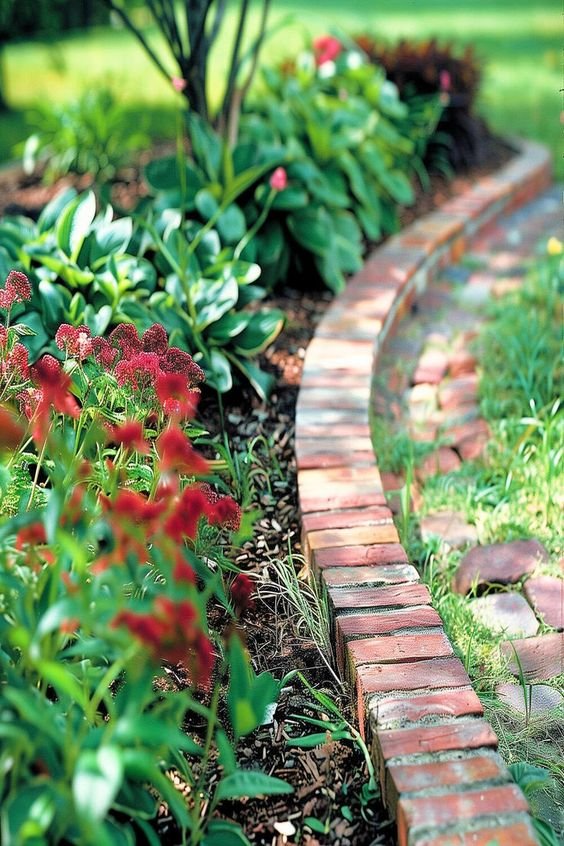
Source: Pinterest @HearthandPetals
Natural stone edging
Create an organic and rustic border by incorporating the beauty of natural stone. Stacking flat stones or boulders along the edges of your landscape is perfect if you wish for a charming and earthy appeal.

Source: Pinterest @HearthandPetals
Wood log edging
Logs or timber can provide a natural-looking border for your landscape that blends seamlessly with the surroundings. Define areas such as garden beds, pathways or borders around trees and shrubs by installing logs vertically or horizontally.
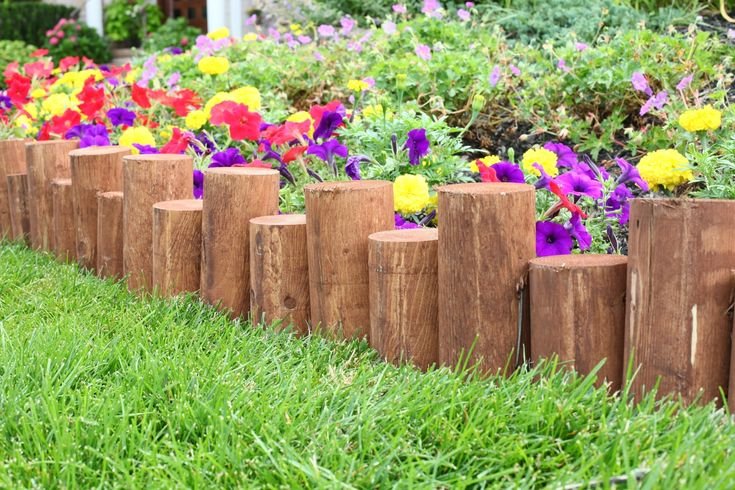
Source: Pinterest @kerecsenvetoss5z
Metal landscape edging
If a sleek and contemporary design is what you are looking for, metal edging is the one for you. Think borders made from steel, aluminium or corten steel. Metal edging is a durable and low-maintenance landscaping solution that acts as a crisp and defined border.
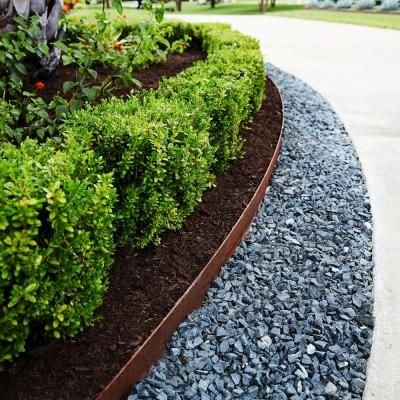
Source: Pinterest @homedepot
Paver edging
Ideal for garden beds, driveways and pathways, pavers can help create a clean and uniform border along areas. Moreover, these are available in a variety of styles, sizes and colours for you to choose from according to your preferences and existing landscape design.
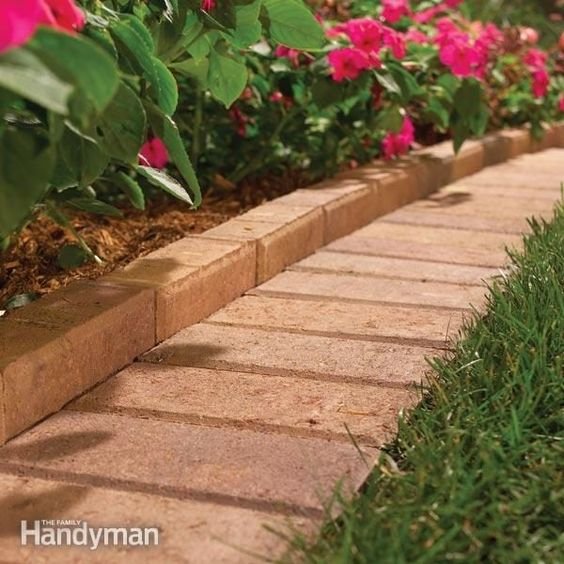
Source: Pinterest @family_handyman
Concrete curbing
Installing concrete curbing can provide a permanent and customisable border for your outdoor spaces. With the ability to be moulded into various shapes and patterns, concrete curbing opens endless possibilities for creativity and flexibility in design.
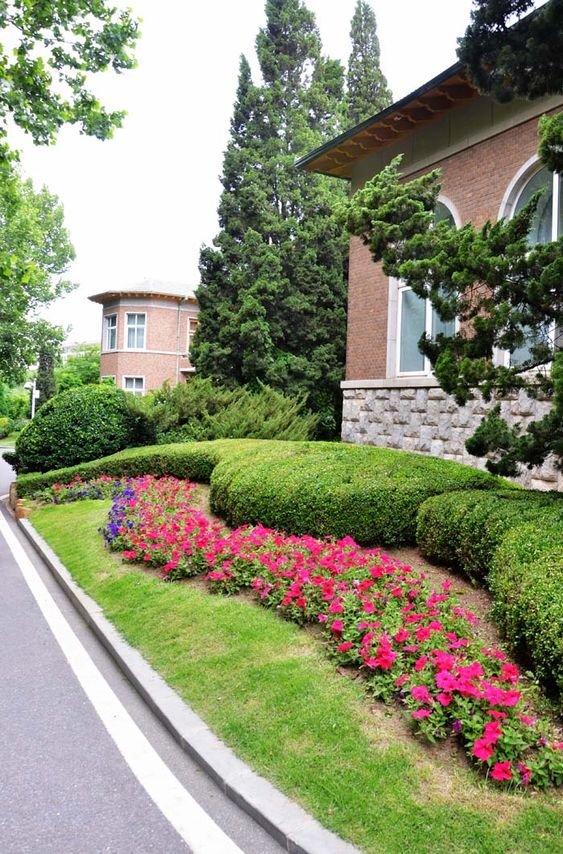
Source: Pinterest @decorhomeidea
Plastic landscape edging
A flexible plastic edging for your landscape is a budget-friendly and easy-to-install option. It is a versatile solution for defining garden beds, borders and pathways as it comes in various colours and styles.

Source: Pinterest @ProductsOnSaleAustralia
Gabion edging
Gabion edging is made of wire mesh filled with rocks and stones and can create a contemporary and industrial look. It provides a durable and functional border while also adding visual interest and texture to your landscape.
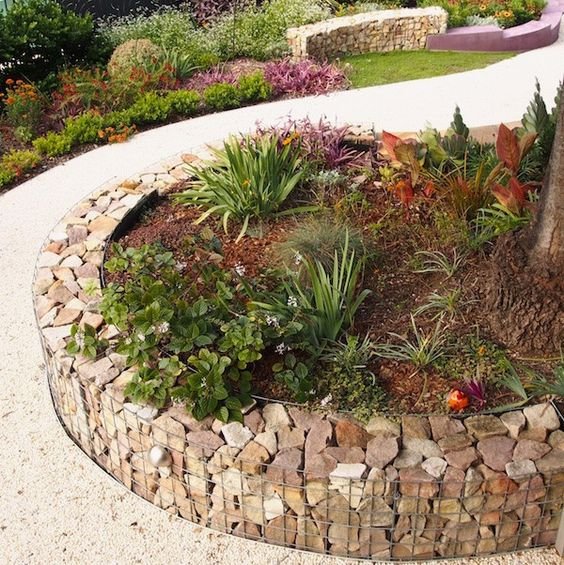
Source: Pinterest @plantcaretoday
Gravel or pebble borders
Garden beds or pathways can be defined using a border of gravel or pebbles. Combine them with a metal or plastic barrier to contain them and avoid spilling into the surrounding areas.

Source: Pinterest @whiteandwoodgrain
Railroad tie edging
For a rustic and weathered border for your landscape, you can consider recycling old or reclaimed railroad ties. Not only do they provide a sturdy and long-lasting edging solution, but also add a touch of history and character to your outdoor space.
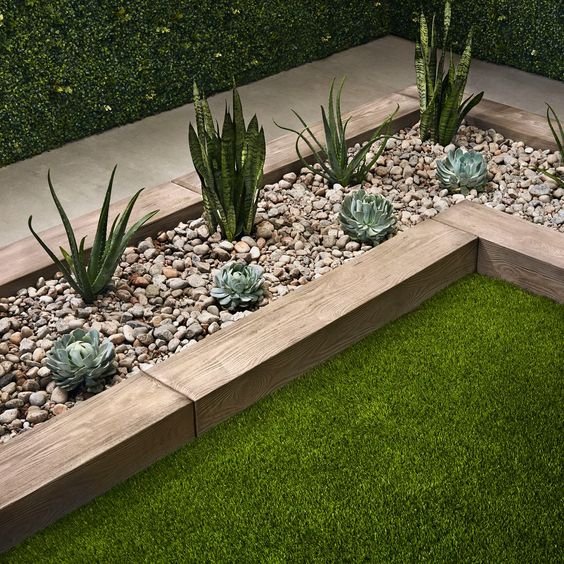
Source: Pinterest @techobloc
Brick paver mowing strip
Installing a narrow strip of brick pavers along the edge of your lawn can create a defined border that facilitates mowing and maintenance. When it comes to keeping grassy areas and landscaping separate, brick paver mowing strips can prove to be a practical and attractive solution.
Cobblestone edging
Cobblestone edging can add an Old World charm to your landscape. Create a timeless and elegant border by laying cobblestones along garden beds, driveways or pathways and achieve a traditional, cottage-style look.
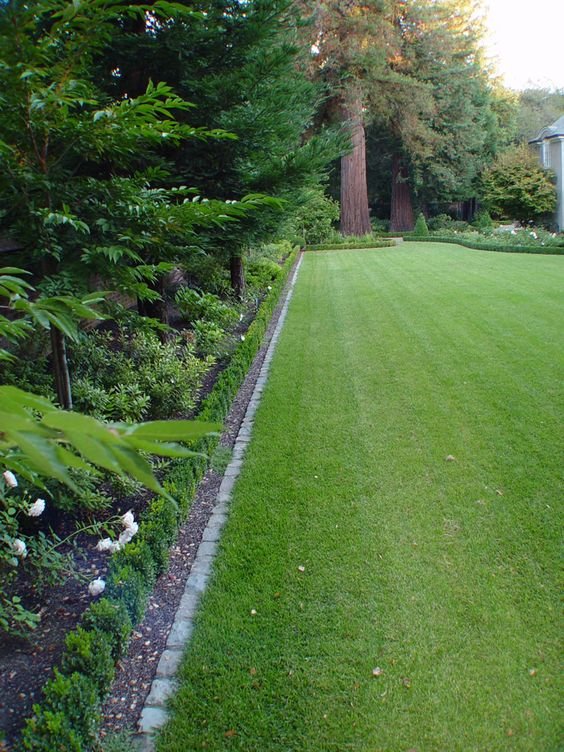
Source: Pinterest @cobbleandcurb
Bamboo edging
Bamboo is a sustainable and eco-friendly border option for your landscape. Bamboo poles and boards can create natural and tropical-inspired borders, adding texture and visual interest to the space.

Source: Pinterest @decorhomeidea
Terracotta tile edging
Evoke a Mediterranean feel for your outdoor space with terracotta tile edging. Lay them along garden beds or pathways to achieve a warm and inviting border reminiscent of a sun-drenched exotic villa.

Source: Pinterest @WSGardenstone
Limestone edging
Limestone edging can provide a sophisticated and upscale look to the space. With its natural beauty and subtle colour variations, limestone edging is perfect for a touch of luxury.
Flagstone edging
Flagstone edging is your go-to if a rustic and rugged border is what you’re looking for. Achieve a natural and organic look that goes with a variety of landscape styles by laying irregularly shaped flagstones along garden beds or pathways.
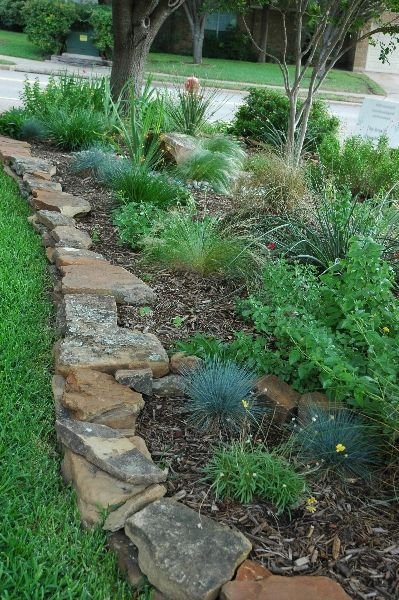
Source: Pinterest @plantcaretoday
Recycled glass mulch edging
If you wish for a pop of colour in your landscape, consider recycled glass mulch edging. Colourful glass mulch can create a vibrant and eye-catching border that adds to the beauty of your garden beds and pathways.
Terracotta pot edging
Terracotta pots can be repurposed as edging for your garden beds. Simply line them up along edges and fill up with plants or flowers for a charming and whimsical border, adding personality to your outdoor space.
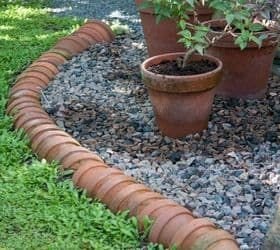
Source: Pinterest @plantcaretoday
Reclaimed metal edging
Use reclaimed metal for bordering your landscape and give new life to old materials. Materials like metal sheets and pipes can be repurposed to create an edgy, industrial-inspired border that adds a dynamic character to your outdoor space.
Living edging with plants
Use low-growing plants or groundcovers to define borders and pathways to incorporate living edging. To facilitate the creation of a soft natural border that seamlessly blends into the landscape, choose plants that display the spreading habit, like creeping thyme or mondo grass.
FAQs
Why is landscape edging important?
Landscape edging defines the specific areas within the landscape for different uses, such as lawns, pathways and garden beds, and maintains aesthetic appeal.
What are the different types of landscape edging materials available?
Common edging materials include bricks, stones, wood, metal, plastic/rubber, concrete, bamboo, and recycled materials like glass mulch or reclaimed metal.
How do I choose the right landscape edging material for my outdoor space?
Consider factors such as aesthetic preference, durability, ease of installation/maintenance, cost, and environmental impact when choosing the material.
What are some creative ways to use landscape edging in my outdoor space?
Use edging for intricate designs, garden pathways, framing focal points, mixing materials, or functional elements like mowing strips.
How do I install landscape edging?
Installation steps involve planning, preparing the ground, installing the edging, backfilling, securing with stakes/anchors, and finishing touches like adding mulch or gravel.
How do I maintain landscape edging?
Regular cleaning, inspecting for damage, repairing/replacing as needed, reapplying sealant/protective coatings, and adjusting/realigning over time are necessary maintenance steps.
Can landscape edging add value to my property?
Well-designed and maintained landscape edging can enhance curb appeal and organisation, potentially increasing property value by attracting buyers.
| Got any questions or point of view on our article? We would love to hear from you. Write to our Editor-in-Chief Jhumur Ghosh at jhumur.ghosh1@housing.com |

Riddhi Chatterji is currently pursuing a master’s degree in English literature from University of Delhi. Her meticulous attention to detail and the desire to make a learning experience out of every opportunity has allowed her to work with different forms of textual content for digital platforms, ranging from social media to news desks. When not working or studying , you can find her with her head buried in a book, discovering new music and movies, or out and about exploring the city on the metro.












